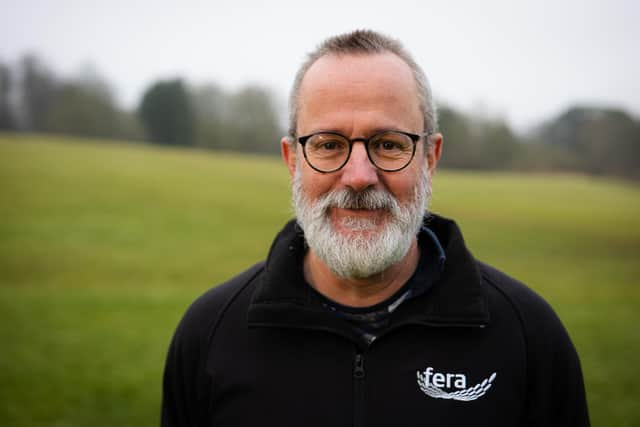Enhanced payments for ‘farming with nature’ are a step in the right direction towards for the environment - Glyn Jones
Plant and animal biodiversity is a fundamental element of ‘natural capital’ on all agricultural land and country estates. Encompassing every form of animal and plant life, whether that be farmed or wild, above ground or below ground, farmland biodiversity ranges from different crop varieties and livestock breeds to all types of birds, plants. insects and mammals.
A healthy state of biodiversity is central to every productive agricultural system – it’s the glue that holds everything together. Whether it’s food or fibre production, a variety of different species and organisms are crucial to maintaining fertile soil, pest and disease resistance, and pollination – all of which crops and livestock need to grow and thrive.
Advertisement
Hide AdAdvertisement
Hide AdFor example, if a farmer or estate manager invests in maintaining and protecting hedgerows and wildlife areas across the land they manage, they can support insect populations, which has positive effects for pest management, soil health and pollination.


Striving to achieve biodiversity improvement targets, where the decline is halted before starting to increase, has never been more important for farmers, land managers and the nation as a whole. There’s serious concern about the degradation of our biodiversity in the UK; the 2019 State of Nature report showed evidence that 70 per cent of all UK animal and plant species are in decline.
As custodians of the countryside, farmers and land managers are in a unique position to protect this valuable natural capital. By investing in biodiversity and making the most of new income streams, they can help to preserve natural beauty for generations to come, as well as future proofing farm and estate businesses.
To equip over 100 Yorkshire farmers and land managers with the knowledge needed to realise income from farmland biodiversity, Fera Science and other industry partners are supporting a Defra-funded conservation project across the North York Moors National Park. This has involved using advanced remote sensing technology and geographic information systems (GIS) to create a detailed natural capital map of the 1,436km2 National Park. The landscape, which includes heather moorland, forests and coastline, has been mapped into different habitat areas and the carbon storage capacity and biodiversity value scored for each land ‘parcel’.
Advertisement
Hide AdAdvertisement
Hide AdFrom here, investment scenarios for biodiversity net gain, carbon and water quality opportunities can be modelled, to give land managers a prediction of what they could achieve environmentally, and how this could stack up alongside business goals.
When it comes to making future land use decisions, farmers and estate managers need to be aware of the range of available options or what is possible with the land assets they have, as well as considering what’s right for their business long-term.
We know that post-Brexit agricultural support schemes are going to have a much bigger focus on natural capital and the environment, and emerging markets are offering extensive financial rewards for natural capital ‘products’ such as biodiversity credits.
Glyn Jones is head of science (plant) at Fera Science.